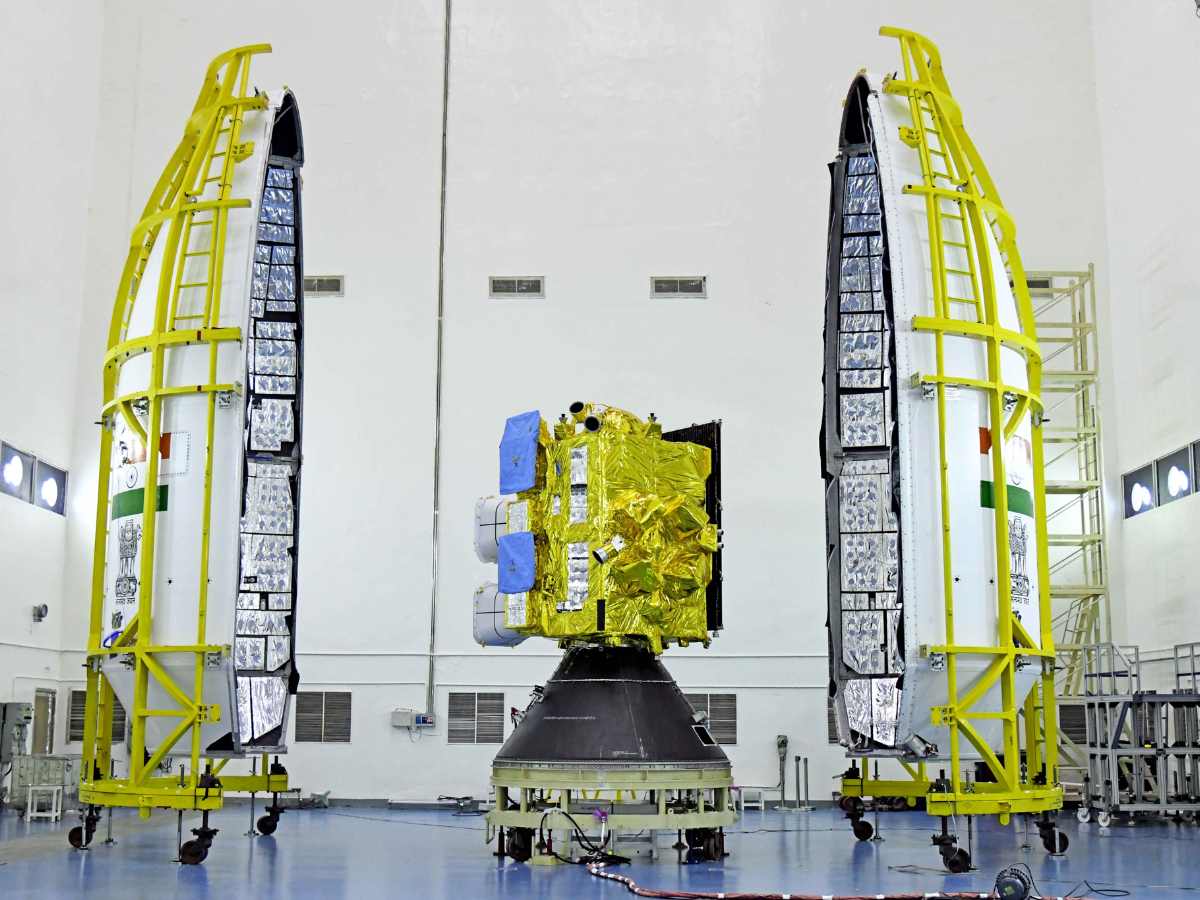ISRO all set to launch GSLV-F14/INSAT-3DS mission on 17 February
The subsequent endeavor for the orbit-raising method will ensure that the satellite is positioned in a Geo-stationary Orbit.

Indian Space Research Organisation is all set to launch the GSLV-F14/INSAT-3DS mission from Satish Dhawan Space Centre, Sriharikota. The mission aims to deploy the INSAT-3DS meteorological satellite into the Geosynchronous Transfer Orbit [GTO].
The subsequent endeavor for the orbit-raising method will ensure that the satellite is positioned in a Geo-stationary Orbit. GSLV [Geosynchronous Satellite Launch Vehicle] is a three-stage 51.7m long launch vehicle having a liftoff mass of 420 tonnes. It can be used to launch a variety of spacecraft capable of performing communications, navigation, earth resource surveys, and any other proprietary mission.
Join PSU Connect on WhatsApp now for quick updates! Whatsapp Channel
Read Also : NTPC to extend support for setting up National Level Archery Academy at Nava RaipurINSAT-3DS Satellite is a follow-on mission of the third-generation meteorological satellite from Geostationary Orbit. The mission is fully funded by the Ministry of Earth Sciences and is designed to enhance meteorological observations and monitoring of land and ocean surfaces for weather forecasting and disaster warning.
Read Also : REC Limited declares second interim dividend Rs 4.60 per shareVarious departments of the Ministry of Earth Sciences such as the India Metrology Department, the National Centre for Medium-Range Weather Forecasting, the Indian Institute of Tropical Meteorology, the National Institute of Ocean Technology, the Indian National Centre for Ocean Information Services, and various other agencies and institutes will be using the INSAT-3DS Satellite data to provide improved weather forecasts and meteorological services.
The primary objective of the mission is to monitor Earth's surface and carry out Oceanic observations and its environment in various spectral channels of meteorological importance.
Read Also : Defence Boost: Rajnath Singh Inaugurates Third LCA Tejas Mk1A Line and First LCA Mk1A is Flagged Off at HAL Nashik